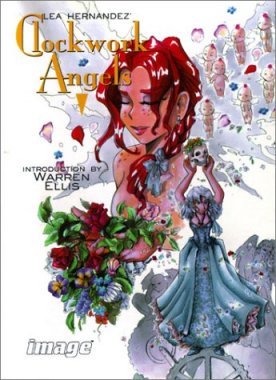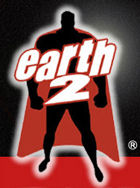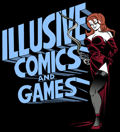| Clockwork
Angels
It's times
like these that I wish I would ape the style of some other
online reviewers and employ a rating system. After all, the
world isn't black and white; it's more of a 1 through 10 kind
of deal. It would be easier to say that a book that didn't
really sparkle and didn't completely satisfy my three-color
preferences, could be called a "6" because it had
some good and memorable bits that I enjoyed, rather then saying
"don't buy this." This whole recommending bit comes
down to basically my opinion versus the comic reading community
(well, the part of the community that likes whatever book
I'm panning…) So why don't I just give books that are
"okay" but not "great" a nice round "5"
or "6"?
Because,
damnit: comics should never be just "okay".
Comics
are the ultimate medium: a perfect (most of the time) fusion
of the visual and aesthetic aspects of Art and expressive
and allegorical power of Literature. If a movie and a novel
had a kid, it would be a comic book.
I bring
this up because I really would have liked to give Lea Hernandez's
Clockwork Angels a better review, but sadly, I just
can't do it.
Temperance
is young woman in 1897, plying her trade as a magician and
traveling with her life long friend Amy in an effort to escape
her past and criminal family. But Temperance's "magic"
isn't limited to parlor tricks and long-eared mammals; Temperance
can read the minds of the recently dead. When she is asked
to read the mind of someone called the Mad Machinist, Temperance
becomes embroiled in a nightmare that involves a pact made
with a demon, Amy's own mystical past, and a small town called
Heaven with some secrets of its own.
There's
a lot here that Hernandez deserves credit for, among which
is the interesting setting. It's been called "steampunk,"
but I failed to see the high level of technology that is supposed
to accompany the multi-tiered genre of 1880s/sci-fi/western
in order to qualify, so call it fantasy with a touch of the
old west. Coyotes can talk and there's literally a bunch of
jackalopes running around. They're horse-sized, deer-horned
rabbits and people ride them. It's a hoot.
Problems
arise with Hernandez's characters. The fact is that there
are a touch too many that get introduced rather haphazardly.
While Temperance and Amy are both okay characters and we get
early indications of both their friendship and their budding
romance, other characters are severely lacking. The villain
of the piece, the demon Sacerdote (this was the most "evil"
sounding name we could come up with? Wendell the Tap Dancing
Demon was taken?), is introduced to us in a boring panel,
where he runs into Amy in a hallway.
What kind
of entrance is that? Where's the drama? Where's the fear one
should have for the characters as they have to face this demon?
Sacerdote never does any killing in the book, though we get
told several times that he's the worst killer around. While
I realize that this book is meant to appeal to a younger and
female audience, it's a visual medium and showing us why Sacerdote
is so feared works much better than just telling us about
it. The kiddies can take a little blood spray here and there.
They get plenty of it on the news.
In fact,
that's one of Hernandez's problems: she spends too much time
on exposition, and half the time, it's not as much in-depth
as it is long and simply a chore to read. In the middle of
the book, an entire three pages is devoted to nothing but
text and some side illustrations in the upper or lower corners.
While it explains the connection between Amy and Sacerdote
(it's not supposed to entirely, but it's pretty obvious who
the "red-haired sister" is), it's a dead stop to
the reader. Up until this point, we'd had a small build up
where we didn't know what was going on, but it was interesting
to guess at what the connections each character had to one
another.
But instead
of letting the reader piece it together, Hernandez chucks
a huge chunk of exposition at the reader, which basically
fills in the cracks of the story and answers too many questions.
If Alan Moore had told me exactly how Watchmen puzzled
together halfway through, what would have been the point?
All the
other characters are either of such little consequence to
the events of the story, or are introduced so fast and seemingly
without point or explanation, that speaking of them almost
wastes my keyboard. The exception would be Temperance's uncle,
who gets a lot of page time, but ends up being a very minor
character in the final analysis. Out of all the characters
though, I did like what Hernandez did with him the most: he
was also fighting the stigma of his criminal family, but doing
so as an investigator and was in the process of investigating
a murder when he got caught up in the plot. I would have liked
to see more done with him.
The art
is mostly terrible. There's no mincing words here, it's just
that bad. Hernandez subscribes to the Amerimanga style, but
does it so sloppily that there are times when looking at the
art is just too difficult. Some visuals blend together too
easily and I find it hard to distinguish background from foreground.
Characters look almost identical, especially in the case of
Temperance and Amy. I couldn't tell who was talking to whom
unless a word balloon held a name or a reference that pointed
to which of them was speaking. At one point, I was squinting
and turning back some pages to figure out whose hair was up
and who's was down, just so I could follow a conversation.
It's a little better for the men since they all wear different
suits and have dissimilar hair, but even they suffer from
a bad case of cloning.
The book
would have benefited greatly from some color, and as I look
at the cover, I realize I would have appreciated the art more
if it had been as lovingly rendered as on the cover, with
both Amy and Temperance in full color. The inking isn't crisp
and doesn't help the already shoddy penciling.
One thing
I do like about the art is Hernandez's good eye for the cinematic
shot. Many of her pages are laid out as movie shots: low-angle,
high-angle, long shots, etc. It really adds a level to the
artwork. Hernandez could be a great visual storyteller in
the vein of Chyna Clugston-Major and Jill Thompson, if she
could polish up her character and background work.
In all
fairness, this is a sequel to Hernandez's first work Cathedral
Child, and some of the problems I had with the plot might
have been assuaged had I read the first one, but just because
it's a sequel is no reason that it shouldn't be able to stand
on its own. I dislike giving this book a bad review only because
I don't want to sour anyone towards Hernandez and what she's
trying to accomplish. We need more women in this industry:
one Devon Grayson to every hundred Chuck Dixons is not a good
ratio. And we also need books that appeal to females because
manga is winning them over.
I hate
to say it, but Clockwork Angels is not worth the $10.95
Image is selling it for. It's an okay book. It should have
been a great book.
|






